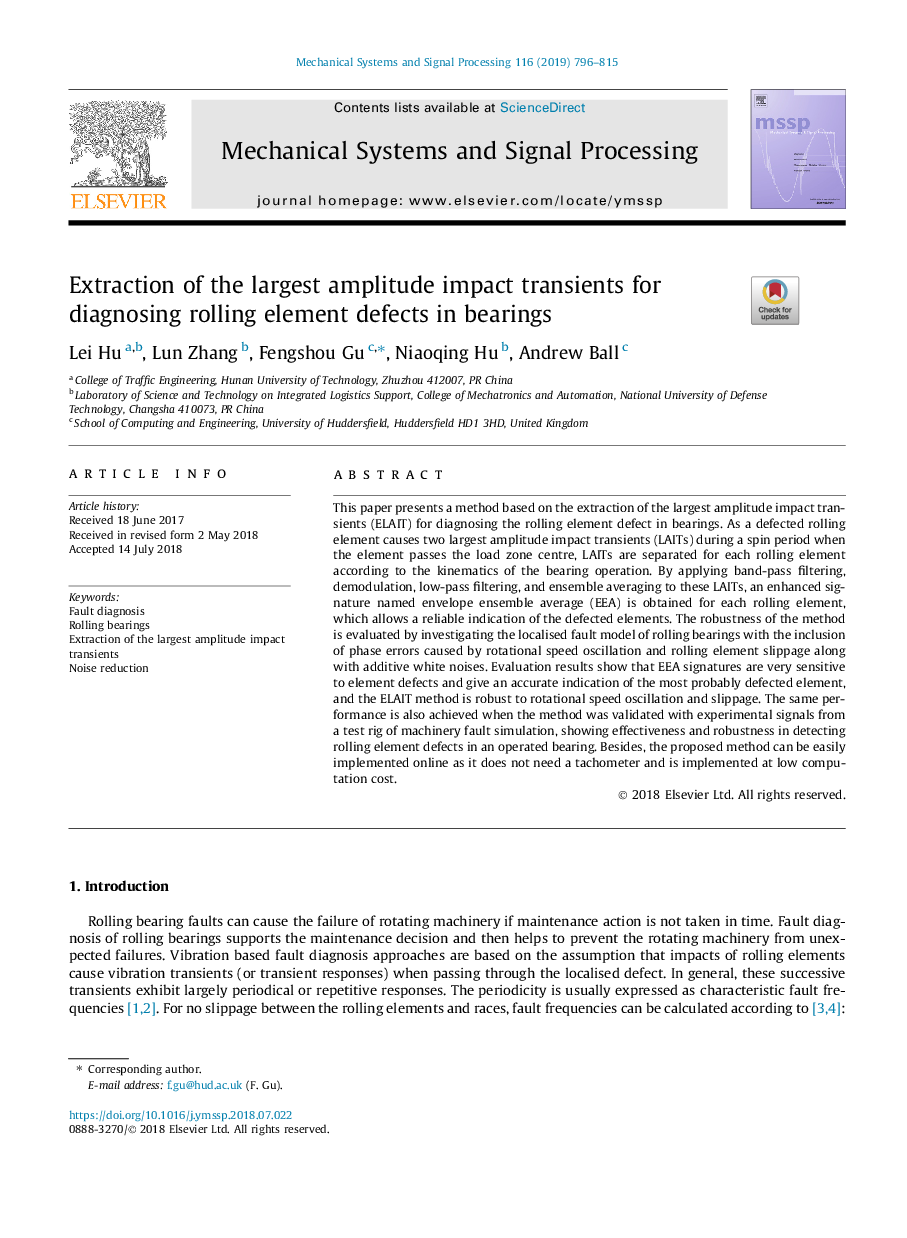| Article ID | Journal | Published Year | Pages | File Type |
|---|---|---|---|---|
| 6953508 | Mechanical Systems and Signal Processing | 2019 | 20 Pages |
Abstract
This paper presents a method based on the extraction of the largest amplitude impact transients (ELAIT) for diagnosing the rolling element defect in bearings. As a defected rolling element causes two largest amplitude impact transients (LAITs) during a spin period when the element passes the load zone centre, LAITs are separated for each rolling element according to the kinematics of the bearing operation. By applying band-pass filtering, demodulation, low-pass filtering, and ensemble averaging to these LAITs, an enhanced signature named envelope ensemble average (EEA) is obtained for each rolling element, which allows a reliable indication of the defected elements. The robustness of the method is evaluated by investigating the localised fault model of rolling bearings with the inclusion of phase errors caused by rotational speed oscillation and rolling element slippage along with additive white noises. Evaluation results show that EEA signatures are very sensitive to element defects and give an accurate indication of the most probably defected element, and the ELAIT method is robust to rotational speed oscillation and slippage. The same performance is also achieved when the method was validated with experimental signals from a test rig of machinery fault simulation, showing effectiveness and robustness in detecting rolling element defects in an operated bearing. Besides, the proposed method can be easily implemented online as it does not need a tachometer and is implemented at low computation cost.
Related Topics
Physical Sciences and Engineering
Computer Science
Signal Processing
Authors
Lei Hu, Lun Zhang, Fengshou Gu, Niaoqing Hu, Andrew Ball,
